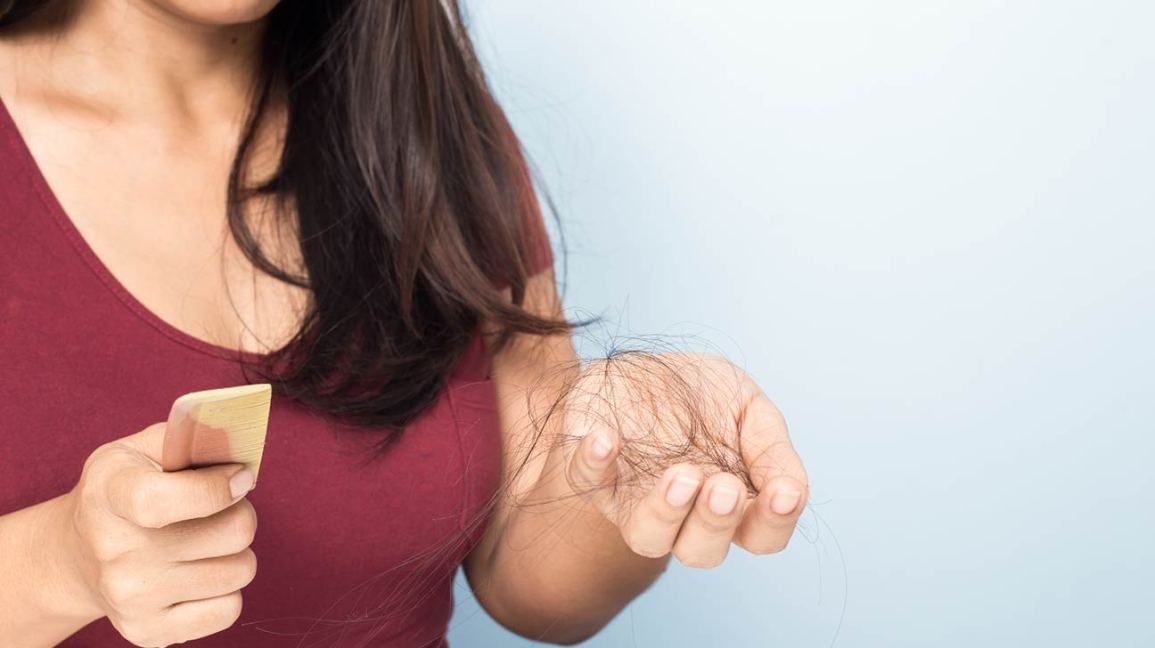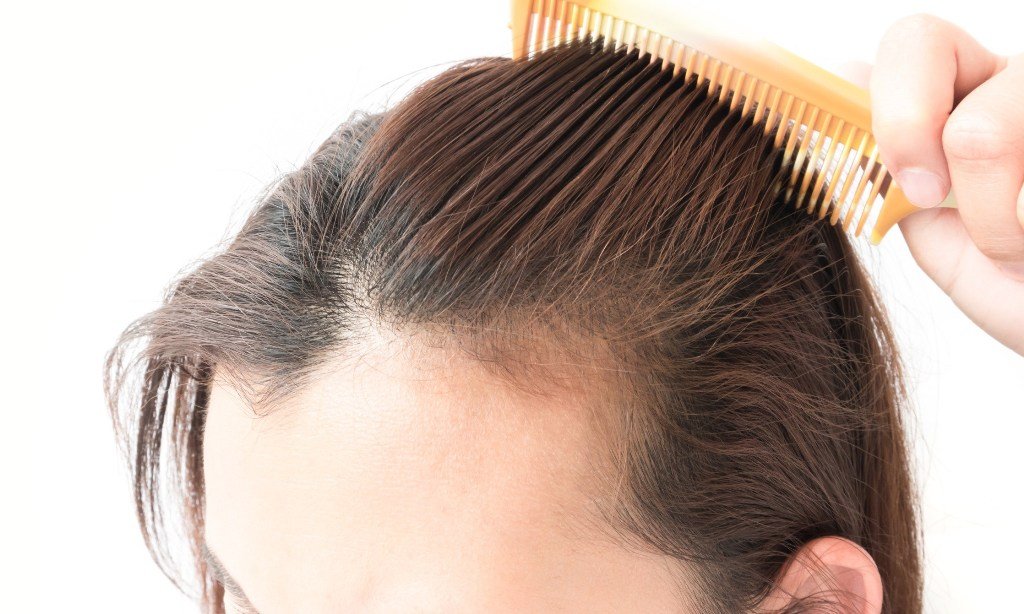Alopecia or hair loss can be temporary or permanent, but its effects can be devastating. While male-pattern baldness seems to be more popular, Alopecia is common in females as well. In the U.S. alone, over 21 million females suffer from Alopecia.
Hair loss in women can develop due to various factors. Medical conditions, genetics, hormonal changes, or aging can be reasons why women have to deal with hair loss.
In this article, we will highlight the triggers that contribute to hair loss, particularly in women. First, let’s find out the signs and symptoms that indicate Alopecia.
Symptoms
Sudden hair loss: Some women get handfuls of hair after washing or combing their hair after experiencing an emotional or physical shock. This type of hair loss refers to a sudden hair loss. While this type of hair loss leads to hair thinning, it is temporary.
Bald Spots: If you notice patchy or circular bald spots in the scalp, you are experiencing one of the classic symptoms of Alopecia. In some cases, your skin may become painful or itchy before your hair sheds.
Gradual thinning: Older women may experience gradual thinning of hair on top of their head or a receding hairline. We also refer to it as frontal fibrosing Alopecia.
Full-body hair loss: Medical treatments such as chemotherapy and some underlying health conditions can result in full-body hair loss. However, this type of hair loss is temporary, and your hair will start to grow once you start recovering.
Types of Alopecia
Alopecia is not contagious. Bad hair care practices, medication, treatments, genetics, or a health condition can trigger the immune systems to attack hair follicles.
Here are the most common types of Alopecia.

Androgenetic Alopecia: This type of female-pattern baldness is due to family history or genetics. This type of Alopecia is one of the most common hair loss contributors in females between the ages of twelve and forty.
Alopecia areata: Some women notice one or more bald patches that happen suddenly on the head or the body.
Cicatricial Alopecia: This type of Alopecia results in irreversible hair loss because of scarring. If you suffer from Cicatricial Alopecia, scar tissue will replace the follicle once the hair falls out.
Traumatic alopecias: Harsh hairstyling practices can cause the hair shaft to break, resulting in traumatic Alopecia. Blow dryers, hot combs, and many chemicals that stylists use to straighten or dye the hair can lead to traumatic alopecias.
Let’s delve deeper into the reasons that lead to hair loss in women.
Causes of Hair Loss in Women
As we mentioned, many types of medical conditions, treatments, and hormonal changes can lead to hair loss in women. Women suffering from thyroid issues, autoimmune disorders, skin infections, ringworms, and celiac disease are more susceptible to hair loss.
Stress
Women who are under any physical or emotional stress are likely to go through hair loss. For instance, if you recently had major surgery or bore a loved one’s loss, stress can slow down bodily processes such as hair production. Typically, stress-induced Alopecia symptoms begin appearing three months after a stressful event, so most women have trouble pinpointing the trigger.
Different life situations or events can contribute to hair loss, but the good news is that stress-related hair loss is temporary. Once you overcome the grief, hair loss will slow down, and the follicles will start reproducing hair.
Hormone imbalances and Menopause
Experiencing hair loss during Menopause is a common phenomenon for women. That’s because progesterone and estrogen production decreases during this phase, leading to a hormonal imbalance. Apart from an irregular menstrual cycle, women also go through other changes such as weight gain, night sweats, dry skin, and vaginal dryness. All these changes can add more stress to your life and speed up hair loss.
Birth control pills can also be a contributor to hair loss. Most women have to deal with excessive hair loss after going off hormonal birth control pills because hormonal changes disrupt the hair lifecycle.
Vitamin or Mineral Deficiency
Women who lack certain minerals and vitamins may also experience hair loss. For that reason, many dermatologists recommend consuming supplements and increasing your vitamin intake through your diet. If your doctor thinks you need to add more nutrients to your diet, here are some of the food sources that you should include in your menu.
- Red meat
- Salmon
- Leafy Greens
- Eggs
- Beef
- Milk
- Clams, oysters, and mussels
- Legumes
Consume foods rich in iron to promote hair growth. Women who have eating disorders, like anorexia nervosa, should also benefit from supplements to prevent any deficiency that contributes to hair loss.

Telogen Effluvium
TE is one of the most common causes of hair loss in women. This temporary type of hair loss occurs when the follicles are resting or when there is a change in the number of follicles. For instance, women often lose hair after childbirth or any stressful event that disrupts their hair lifecycle.
You can identify Telogen Effluvium by inspecting a hair strand. If you have a bulb of Keratin at the root, then you may have Telogen hair. Your hair may become thin, but you are not likely to go bald permanently.
Possible triggers include:
- Infections
- Emotional stress
- High fever
- Chronic illness
- Lack of proteins
- Crash diets
- Eating disorder
Nonsteroidal anti-inflammatory drugs, antidepressants, calcium channel blockers, beta-blockers, or retinoids can also lead to TE.
Other Causes
In addition to that, here are some conditions that may lead to hair loss in women:
- Hodgkin’s disease
- Hashimoto disease
- Addison’s disease
- hyperthyroidism
- hypothyroidism
- Celiac disease
- Lupus
- Trichorrhexis invaginata
- hypopituitarism
- Scleroderma
- Lichen planus
Final Thoughts
According to the American Academy of Dermatology, losing fifty to a hundred strands a day is normal for any man or woman. However, if you notice losing more than two hundred and fifty strands after washing or combing your hair, start looking for the underlying reason. The more you know about why you are losing so much hair, the easier it will be to invest in the most beneficial hair products and treatments to treat hair loss.
Sources

















